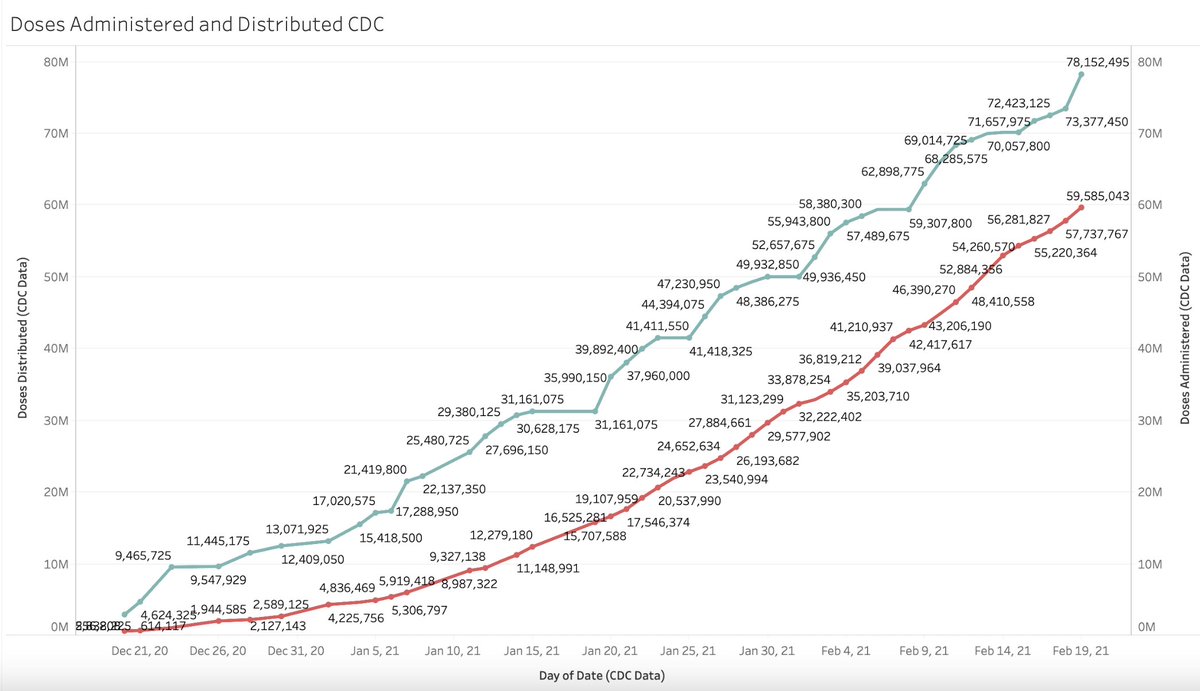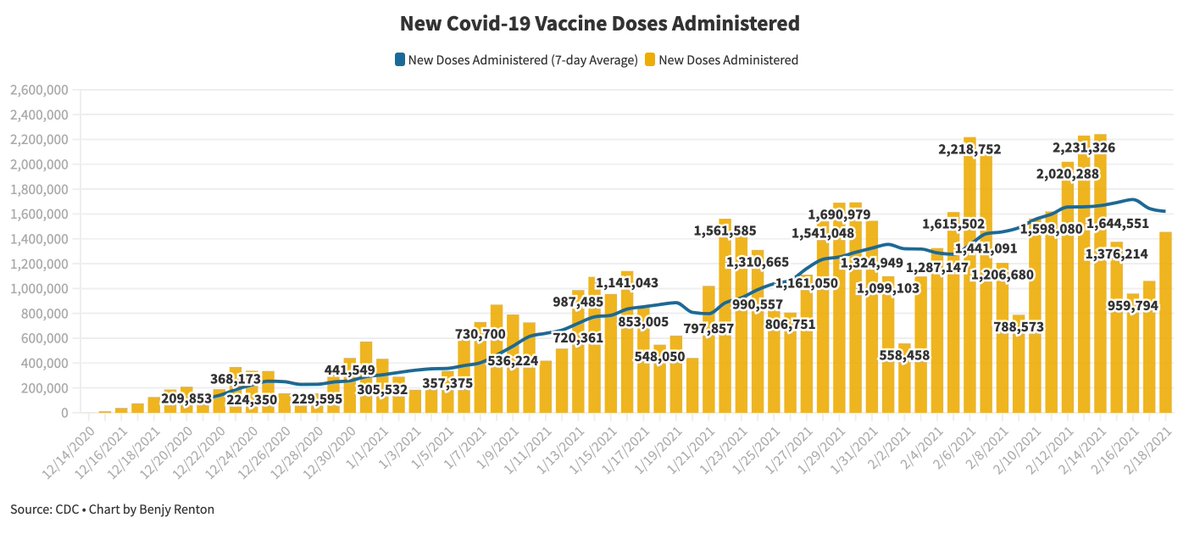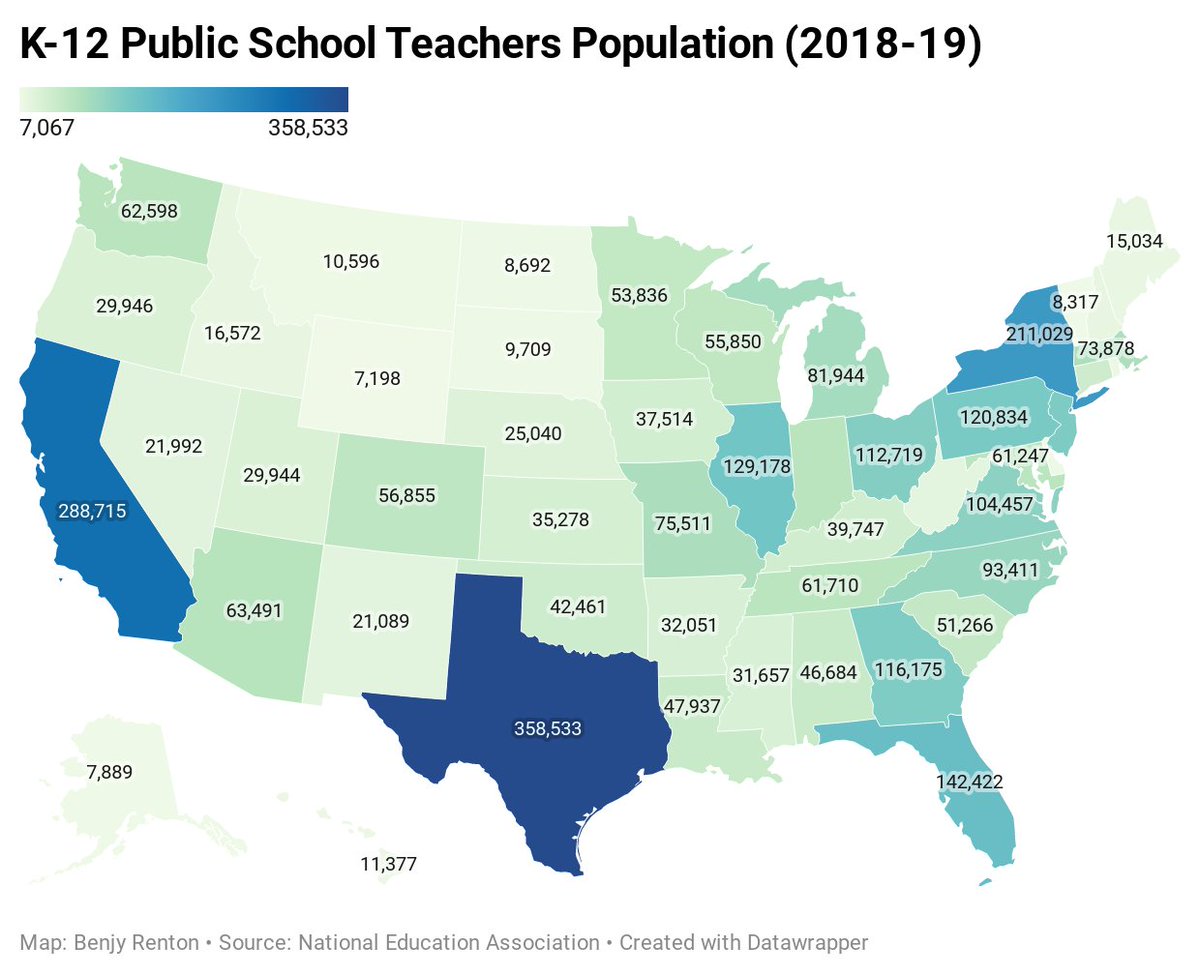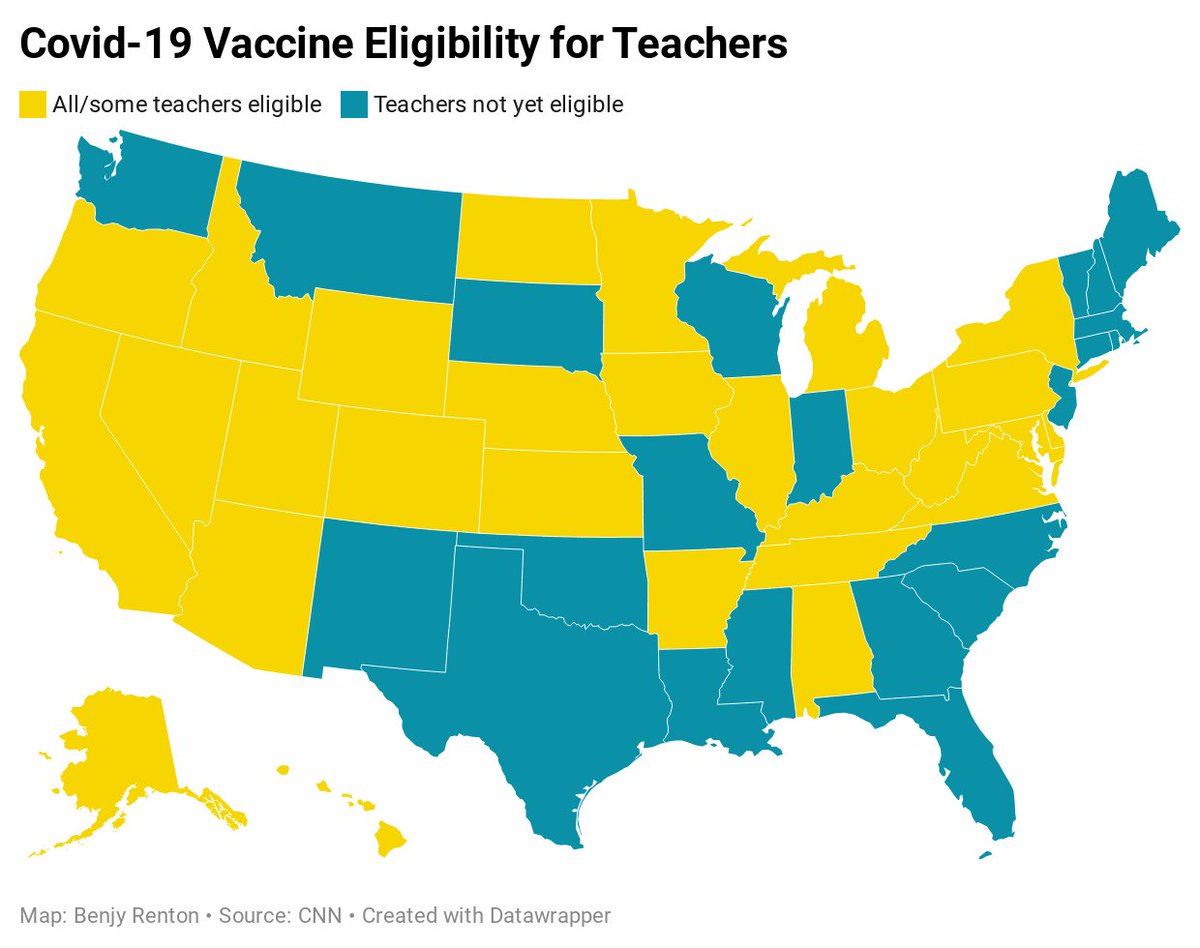
2,028,692 doses have been reported administered in the last 24 hours, according to the CDC. 24.4% of adults have received a first dose.
Doses Delivered: 127,869,155
Doses Administered: 95,721,290
74.9% of delivered doses have been administered.
public.tableau.com/views/COVID-19…
Doses Delivered: 127,869,155
Doses Administered: 95,721,290
74.9% of delivered doses have been administered.
public.tableau.com/views/COVID-19…

North Dakota leads the nation with 87.3% of shots used. The percentage of supply used is merely one metric to compare states, and soon the dashboard will have more metrics for you to use. The 7-day average is now 2.17 million doses per day. 

15.7 million doses of Pfizer and Moderna doses have been allocated for jurisdictions next week. The dashboard has been updated with the latest allocations.
https://twitter.com/bhrenton/status/1369652009570275335
In 49 days, we are now 79.2% of the way to President Biden's goal of 100 million shots in 100 days. #VaccinateAmerica 

• • •
Missing some Tweet in this thread? You can try to
force a refresh













